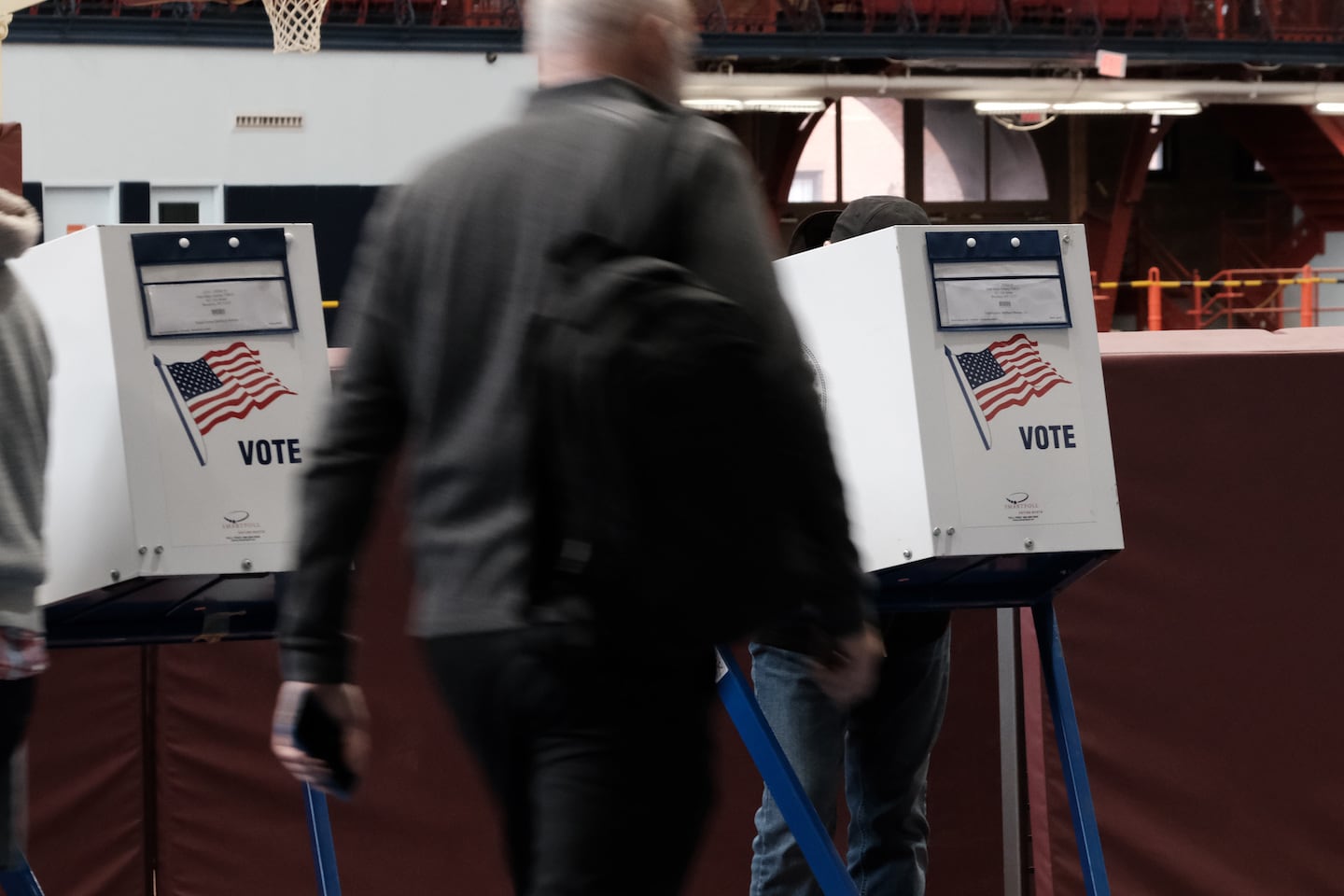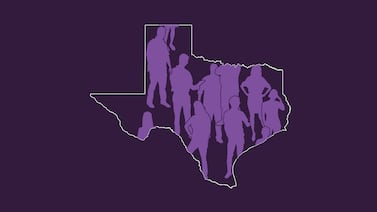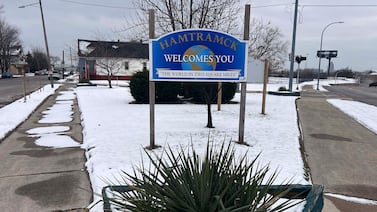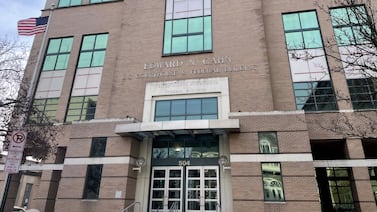A version of this post was originally distributed in Votebeat’s weekly newsletter. Sign up here.
Our big takeaway from Wednesday is worth emphasizing again to make another point about the week: Election Day saw scattered problems with voting and ballot counting, but administrators appropriately dealt with them—and judging by all available reporting, no hordes of people freaked out, crying fraud or confronting election workers. Those are gigantic accomplishments for America’s overworked election administrators and our voting public. Even though New Jersey gubernatorial contender Jack Ciattarelli hasn’t conceded yet, he has reassured Republicans that the election results would be “fair and legal.” “I don’t want people falling victim to wild conspiracy theories or online rumors,” he said while awaiting a more complete count of the remaining votes.
But, there is something else we gotta talk a bit more about in New Jersey.
In articles and in this newsletter this year, we’ve stressed that productive voting changes can’t happen overnight — and they certainly can’t happen without adequate funding, training, and planning. For proof of that, see New Jersey this week. The state rolled out early voting for the first time this election. That required a lot of effort but primarily new machines, in use both during early voting and on Election Day. Poll workers were using electronic poll books for the first time to check in registered voters, and there were natural growing pains — poll workers couldn’t figure out how to set them up and specifically struggled to use their new secure wifi routers to connect to the state’s voter registration system.
Beyond that, in Essex County, home of Newark, the results from 56 voting districts were not counted on Tuesday night due to a poll worker error. In Robbinsville Township, the bag they used to catch ballots after they were scanned was too small and jammed the machine at one precinct. At a Paterson polling place, a power outage delayed the opening of a precinct by one hour. Workers in Union County incorrectly removed the storage drives from voting machines. In Camden County machine errors meant that they had to count 25 precincts’ ballots manually because precincts experienced a “cartridge readout failure,” county officials said. The county still uses decades-old machines whose printer cartridges failed to print results.
Alicia D’Alessandro, a spokeswoman for the state Division of Elections, told NJ.com that the problems were isolated and only occurred in a relatively small number of the state’s precincts. “We are aware there were a small number of cases,” she said. “Generally speaking, there’s a lot of voter confusion.” And there was bound to be.
This is the second time in two years that the process of voting has radically changed for New Jersey voters — first the pandemic forced an immediate and unexpected shift to vote by mail, and then the convenience of additional voting options inspired New Jersey to adopt early in-person voting. Notably, last year every registered voter automatically received a ballot by mail, but this year they did not, unless they requested one. That’s a lot of change in two years, and election administrators should be proud that the errors were small and solvable. But next time — if legislators do not allow realistic timeframes for changes or afford the budget to make them — they might not be. And, if turnout in New Jersey had not been far lower than expected, the problems might not have been so manageable.
Statewide turnout this year sits at around 37 percent — down two points from the 2017 gubernatorial election. Voter participation in these off-year races in New Jersey has been trending downward for some time. The last time more than half of eligible voters turned out to vote for governor was in 1997, when 56 percent showed. It’s pretty startling that the numbers were down even farther this year, given that New Jersians had more than one day to vote. And the number would likely have been lower in a normal political climate. But Republicans, by every measure, turned out in far higher than expected numbers, resulting in the closest gubernatorial election since 1981.
The lack of turnout might have provided an advantage to the voters who did show up: Election workers can easily overcome problems when there isn’t a crush of voters at the polling places. High turnout, by contrast, exacerbates even small snafus. So, in some respects, the low turnout here was a silver lining. The one-hour delays would have turned into several hours, and the hand counting would have taken several more days. So just because New Jersey dodged a bullet this time doesn’t mean the state can coast to the midterms next year.
While the governor and lawmakers were praised for their bipartisan choice to expand early voting — a stark contrast to the number of states, like Florida and Georgia and Iowa, that are doing the opposite — they gave little consideration to the money, technology, and training needed to actually make early voting work.
When the early voting bill was first floated, election administrators expressed concern that the state’s existing technology wasn’t going to keep up with the expansion. The bill also contained only about half of the money that election administrators said they needed to implement the changes. The state forked over just over $40 million to pay for the equipment, additional polling locations, and storage necessary to expand early voting, though election administrators put the price tag at just over $80 million. Part of that cost? Effective poll worker training. This lack of necessary money was compounded by the severe poll worker shortages and the inability to hold large, in-person training sessions because of the pandemic — a perfect storm resulting in voter frustration and confusion in many polling locations. It all demonstrates that there’s plenty of room for improvements but precious little time to make them.
Back Then
When New Jersey was established as a colony in the late 1600s, voting rights were given by royal declaration within incorporated cities, rather than colonywide. Men who did business in these cities — residency was immaterial — were politically enfranchised. The lack of specific residency requirements in New Jersey’s cities, while they existed in more rural and agrarian areas of the state, was designed to account for the differences in property ownership between farmers and city dwellers. City residents, even those with successful businesses, did not own property and might rent indefinitely. When New Jersey established its state Constitution in 1776, it granted suffrage to all people, including women, who met specific wealth and residency requirements. This was controversial: The text says “inhabitants” and makes no mention of gender. Some historians believe this was an oversight, while others believe it was an intentional move to garner popular support for the Revolution. The latter seems, at least to me, a bit more likely, as a 1790 law reaffirmed the rights of property-owning or otherwise wealthy women to vote, specifically saying “he or she” to refer to a voter. Another bill in 1797 used the same wording. Whether women voted during this time is a bit unclear — voting standards and processes varied by city, records are poor, and newspapers rarely covered women doing anything, so they certainly didn’t cover them voting. But the radical move to enfranchise women was short-lived. Federalists and others repeatedly accused women of being easily manipulated, and the electorate was shrunk to white men only by 1807.
In Other News
- The Department of Justice has sued Texas over its expansive voting bill enacted this year, saying that it would harm voting access for elderly and disabled voters as well as voters with language barriers. The suit targets two pieces of the law: The additional requirements set on those who assist voters in casting their ballots, and the requirement for voters to put either their driver’s license number or partial Social Security number on their absentee ballot applications and ballot envelopes. As you’ll recall, we were first to cover this problem in our piece this summer.
- In New York, the three ballot measures aimed at expanding voting and reforming redistricting failed. They would have amended the state Constitution to allow for same-day voter registration, no-excuse absentee voting, and nonpartisan redistricting. It was a shock to Democrats in the state, though it probably shouldn’t have been: While Republicans mounted an organized campaign to oppose the measures, Democrats spent almost no money and nearly no time at all promoting them. To understand the dynamics at play, read our Voting Stat of the Week by Votebeat fellow Francois Barrilleaux below.
- Voting appears to have gone basically OK in Pennsylvania, but now some counties are backlogged on counting ballots. That’s not a great sign for next year, when turnout will be much higher. In Montgomery County, officials are still counting thousands of ballots after a cascading delay caused by the improper printing and distributions of 16,000 ballots last month. County officials also say that a higher than average number of unscannable ballots have come in. Please stop touching your ballots with dirty hands. Meanwhile, Lancaster County election workers are facing a mountain of ballots containing 52,308 write-in votes (mostly in school board races). They are scheduled to work every day, including weekends and holidays, up till their Nov. 22 deadline.
- The Ohio Secretary of State’s office has placed the Franklin County Board of Elections under administrative oversight after errors with their e-poll book system allowed three separate voters to vote twice. In two cases, voters who had already cast early ballots were told on Election Day there was no record of their vote and were allowed to vote again using regular ballots. (They should have been given provisionals.) In the third, a poll worker aware of the e-poll book errors told a voter to cast a second ballot to see if it would work. This poll worker might be charged with a crime.
- An election staffer in Prince William County, Virginia made a series of counting errors on Tuesday that made the Democrats’ margins appear much larger than they were. After double-counting 16,000 ballots from one polling site and not counting around 1,200 ballots from a different polling site — by all accounts a completely inadvertent mistake — the county posted incorrect initial numbers on the state’s election website late in the night after Election Day, though they were corrected hours later.
- In Massachusetts, Republican Gov. Charlie Baker has OK’ed the state’s new redistricting maps and signed them into law. But Secretary of State William Gavin, a Democrat, has strenuously disagreed. Calling the maps a recipe for “chaos,” Gavin said the maps split several important communities in the state and called the governor’s choice “a devastating blow to the voters of Massachusetts.”
- Our partners at Bridge Michigan continue to do absolutely excellent coverage of the ongoing debacle in Adams Township, where Clerk Stephanie Scott was relieved of election duty and had her office searched after she refused to allow maintenance on election machines and allegedly absconded with voting technology. Now, check out this feature by Jonathan Oosting about some Trump-supporting election skeptics there who are convinced that the voting in America is being manipulated … everywhere but in their town.
- In Wisconsin, the Racine County sheriff is seeking charges against five state election commissioners who he says flouted the law during early stages of the pandemic and sent ballots to nursing homes without allowing election workers to visit first in person. Each commissioner, he says, should be charged with five different crimes, including a felony. The state’s attorney general has called the sheriff’s announcement “a disgraceful publicity stunt.”
- Some late Friday news out of Wisconsin: A judge has ruled that the Wisconsin Assembly and Speaker Robin Vos must turn over several records related to the Republican-led 2020 election investigation. American Oversight filed the suit after Vos refused to turn over documents the watchdog organization sought as part of a public records request.
- The U.S. Election Assistance Commission has issued a statement congratulating local election officials for “a well-run voting experience for millions of Americans with minimal reports of interruption.” They chose not to release such a statement in the aftermath of 2020, even though multiple election administrators asked the agency to do so as a show of support. The EAC has also issued new guidance on election audits. Notably, it does not include “forensic audit” in the list of audits election officials should do, because a forensic audit isn’t a real thing.
Voting Stat of the Week
By Francois Barrilleaux, Votebeat
As Jessica notes above, two ballot propositions in New York that would have expanded voting access failed, by margins of 12 to 16 points (though the exact margins may change as the remaining votes are counted). Proposition 3 removed a requirement that New Yorkers register to vote at least 10 days before an election —making same-day registration possible — and Proposition 4 would have allowed for no-excuse absentee voting. (Proposition 1, also backed by Democrats, would have altered redistricting processes.)
The major reason the measures failed was low Democratic turnout contrasted with strong Republican turnout, especially in the Southern Tier portion of the state, along the Pennsylvania state line. To illustrate the difference, consider that only around 14 percent of registered voters in Democrat-dominated New York City voted on the constitutional amendments, compared with in deep-red counties in the Southern Tier: around 30 percent of registered voters in Allegany County, 24 percent in Steuben County, 23 percent in Cattaraugus County, based on unofficial election results so far. These numbers may reflect a successful campaign by conservative groups in New York to tie expanded voting access to fears of voter fraud.




